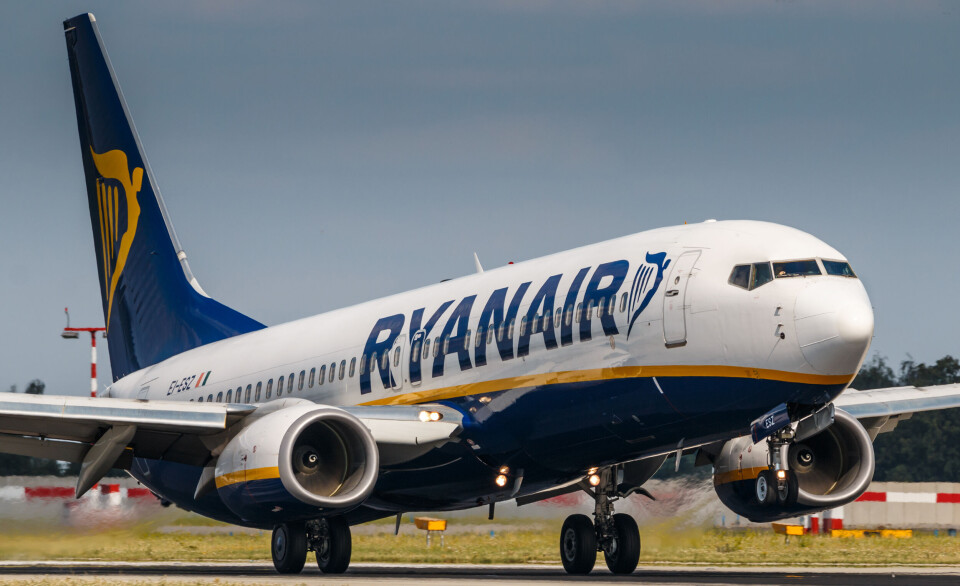Push to reduce 200 more no-reception phone zones in France
A total of 200 sites are covered by a new decree. You can search a full list online to see if your area is included
Could this be the end of standing around holding your phone towards the sky, hoping for a signal?
Fotovika/Shutterstock
Could this be the end of standing around holding your phone towards the sky, hoping for a bar of signal? A new decree in France is aiming to end almost all no-reception phone signal zones nationwide.
The ministerial decree, passed on July 16 in the Journal Officiel, enacts the penultimate phase of the ‘New Deal Mobile’ programme. This aims to ensure that even areas that are currently poorly- or non-covered by mobile phone service will have network coverage.
The latest part of the plan provides for the connection of 200 such sites. The remaining 17 will be the subject of a new decree in the coming months.
Over the past six years, the earlier stages of the New Deal Mobile plan have already greatly reduced the number of areas without any access to mobile phone networks. In 2018, the plan targeted 4,734 areas; today, there are just 217 left to address.
New Deal Mobile aims
The New Deal Mobile plan was launched in 2018 by the government, along with communications authority the Autorité de Régulation des Communications Electroniques (Arcep), and mobile operators (e.g. Bouygues Telecom, Free Mobile, Orange, SFR…).
It has five aims:
To make 4G widespread
To ensure better coverage on public transport
To ensure better coverage in buildings
To offer enhanced 4G in areas where fixed internet is poor
To put an end to areas with no or poor coverage.
The last aim requires each of the main mobile operators in France to build 5,000 masts a year in areas with poor or no coverage. The operators then have 24 months, after approval by ministerial decree, to get the masts operational.
These mast locations are defined in advance by local councillors, the plan states. This is in contrast to previous signal improvement efforts, in which the operators were free to decide where to install masts.
From 11% no signal to 1.9%
Last September, Arcep said that more than 2,600 sites had come into service, and in the past five years, coverage has significantly improved.
In 2019, 11% of France was considered to be a ‘no-signal zone’; four years later, only 1.9% remained, Arcep said. Most of these areas are in rural zones. To achieve this improvement, since the start of the New Deal Mobile, almost 35,000 masts have been built, including 23,500 in rural areas.
By 2022, only six departments in mainland France had less than 90% coverage. These were:
Hautes-Alpes
Savoie
Alpes-Maritimes
Hautes-Pyrénées
Ariège
Alpes-de-Haute-Provence.
Areas of these departments that remained without signal did so mainly “because of their topography, such as mountainous areas”, Arcep said.
With the most recent decree, the aim is that the few areas remaining without signal will not be inhabited, said Olivier Riffard, deputy director general of the Fédération française des télécoms, to Capital.
Read also: We prefer no phone masts in our unspoilt French valley – and no signal
Read more: Mobile operators install masts disguised as trees in France
Billions of euros
Increasing coverage to this extent does not come cheap.
It has involved billions of euros of 4G licences, and heavy investment by operators to bring high and very high speed broadband to more sites.
Since 2018, operators have spent an estimated €1.941 billion - €2.133 billion, on three main areas:
Targeted coverage (€807 million to €931 million)
Improving the quality of service (€594 million to €658 million)
Rolling out 4G (€510 million to €515 million)
Where are the sites, and can I check if my home or holiday home will be covered?
You can see a full list of the communes (along with their department and region) that are covered by this new decree in a table on the official French state legal website here.
It lists the areas by region, department, and commune, as well as including ‘points of interest to cover’, plus numeric identifiers of the specific sites. The table also shows which networks should be available in each area.
Read more: Starlink satellites bring Wi-Fi to rural France
You can head to the website and search for a commune or department by hitting CTRL+F, and typing it in the box that appears.
To choose just five examples:
Challex (Ain, Auvergne-Rhône-Alpes) - Bouygues Telecom/Free Mobile/Orange/SFR
Neuilly-le-Réal (Allier, Auvergne-Rhône-Alpes) - Orange
La Croix-du-Perche (Eure-et-Loir, Centre-Val de Loire) - Free Mobile/Orange
Montbrun Des Corbières (Aude, Occitanie) - Bouygues Telecom/Free Mobile/Orange/SFR
Arboussols (Pyrénées-Orientales, Occitanie) - Free Mobile/Orange/SFR
Read also: Free, Orange, SFR: which mobile operator best covers France?




























